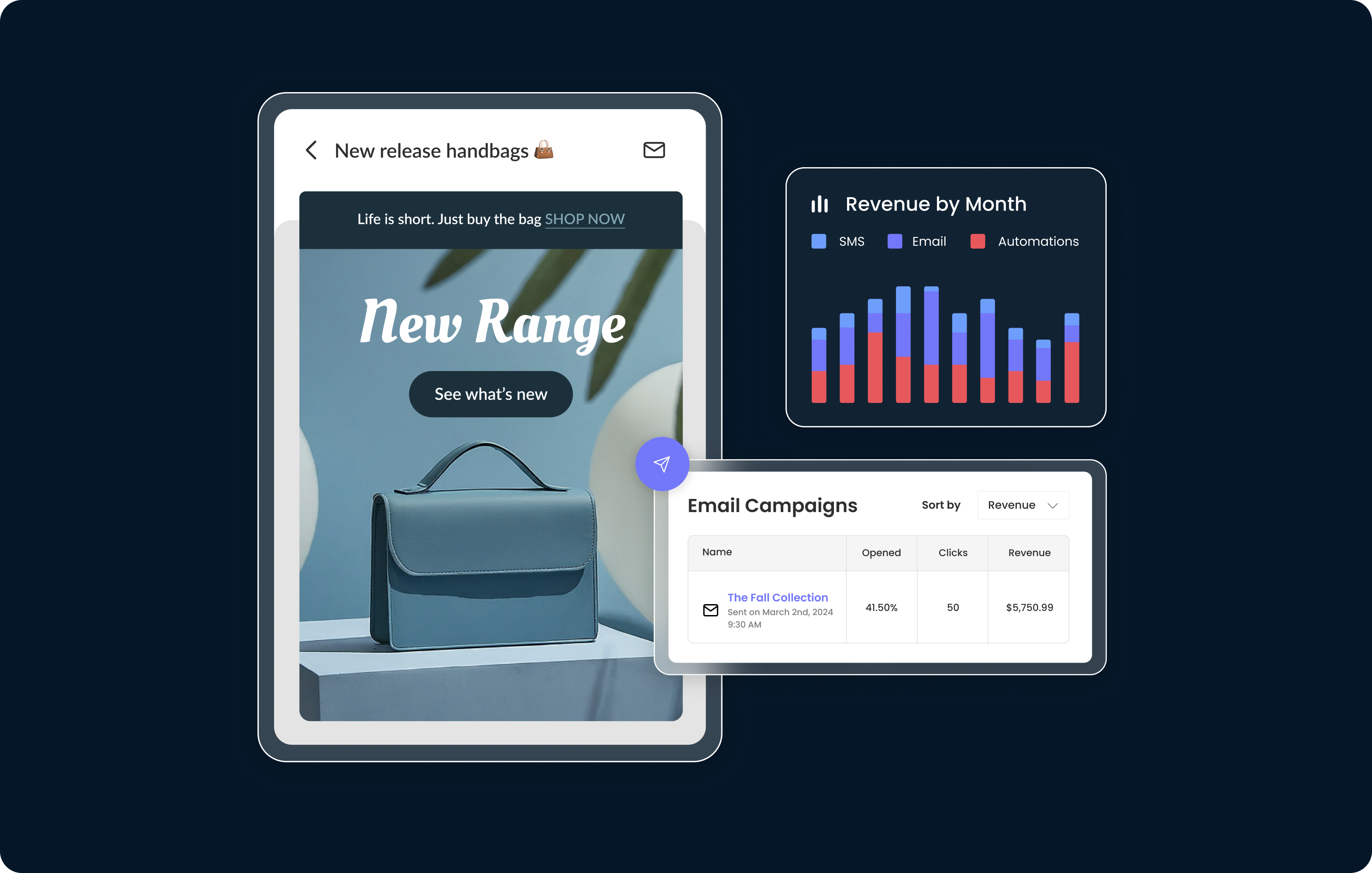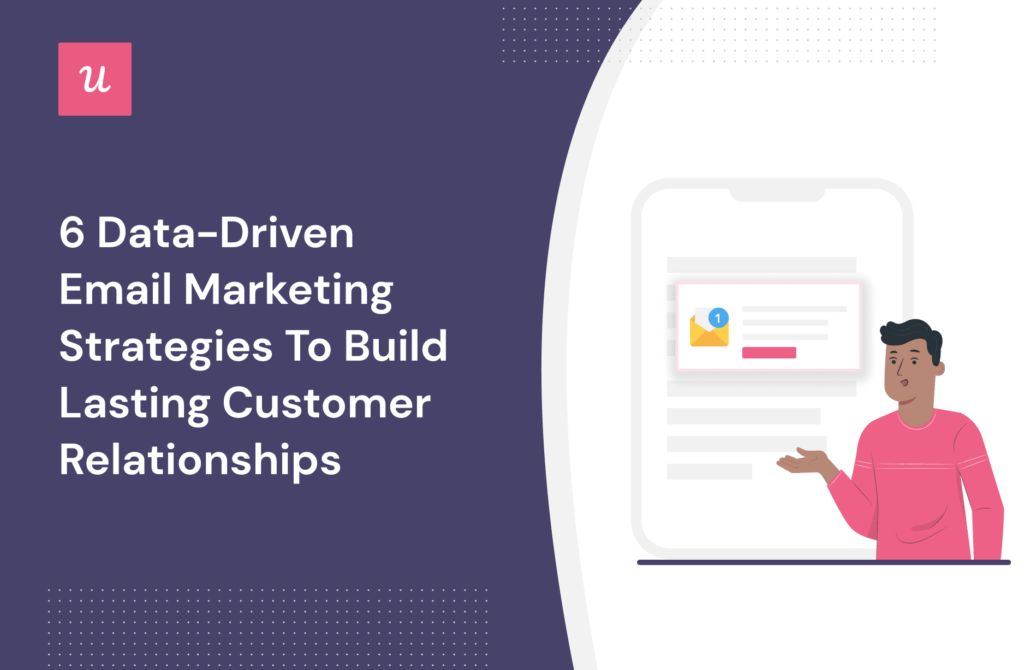Data-driven email marketing strategies are essential for modern businesses. They help personalize messages and improve campaign performance.
In today’s digital world, data is king. Leveraging data allows marketers to craft emails that resonate with their audience. No more guesswork. Instead, we rely on insights drawn from user behavior and preferences. This approach ensures that each email hits the mark.
It’s about sending the right message to the right person at the right time. Data-driven strategies offer a competitive edge. They boost engagement and drive conversions. Ready to dive into the world of data-driven email marketing? Let’s explore how data can transform your email campaigns and elevate your marketing efforts.

Credit: www.voilanorbert.com
Introduction To Data-driven Email Marketing
Data-driven email marketing involves using data to create more effective email campaigns. This approach allows marketers to tailor messages based on customer behavior and preferences. By leveraging data, businesses can increase engagement, improve click-through rates, and boost conversions.
Importance Of Data
Data is critical in email marketing. It helps marketers understand their audience better. With data, you can segment your email list effectively. This means sending the right message to the right person at the right time.
Data provides insights into customer behavior. You can see what content your audience engages with most. This knowledge allows you to create more relevant and personalized emails.
Benefits Of Data-driven Strategies
Data-driven strategies offer numerous benefits:
- Increased Personalization: Tailor emails based on individual preferences.
- Higher Engagement: Send more relevant content, leading to higher open and click rates.
- Improved ROI: Targeted emails lead to better conversion rates and return on investment.
- Better Decision-Making: Data provides insights for making informed marketing decisions.
Using data helps in creating a more strategic email marketing approach. It ensures your emails are not just sent, but read and acted upon.
Building A Quality Email List
Building a quality email list is crucial for effective data-driven email marketing. A targeted and engaged list ensures your emails reach the right audience. This, in turn, boosts open and click-through rates, driving conversions and revenue. Here, we explore two essential aspects of building a quality email list: Opt-in Methods and Segmentation Techniques.
Opt-in Methods
Opt-in methods are the ways you gather email addresses for your list. Use multiple opt-in methods to grow your list effectively. One method is the subscription form on your website. Place it in prominent spots like the homepage and blog posts. Another effective method is offering valuable content. E-books, whitepapers, and exclusive guides work well. People exchange their email addresses for these resources.
Social media can also be a powerful tool. Promote your email subscription through social channels. Use call-to-action buttons to make it easy for users to subscribe. Hosting webinars or online events is another great option. Attendees can be asked to provide their email addresses during registration. These methods ensure you gather genuine, interested subscribers.
Segmentation Techniques
Segmentation techniques help in organizing your email list into smaller, targeted groups. This approach makes your emails more relevant to each subscriber. Start by segmenting based on demographics. Age, gender, and location are common factors. Behavioral segmentation is also important. Look at past purchase history and email engagement.
Interest-based segmentation is another powerful technique. Collect data on what topics your subscribers are interested in. Use surveys or preference centers to gather this information. Combining different segmentation techniques can create highly personalized email campaigns. This increases engagement and improves overall campaign performance.
Personalization In Email Campaigns
Personalization in email campaigns can boost engagement and customer loyalty. Tailored content speaks directly to individual preferences and behaviors. This approach makes the customer feel valued, increasing the chances of conversion. Personalized emails can lead to higher open rates and better click-through rates. Let’s explore ways to use customer data and dynamic content in personalized email campaigns.
Using Customer Data
Customer data is crucial for personalization. Collect data from various touchpoints. This includes browsing history, purchase history, and demographic information. Analyze this data to understand customer preferences and behavior patterns.
Segment your audience based on this information. Create smaller, targeted groups. This allows for more relevant and personalized content. Each segment should receive content tailored to their specific needs and interests.
Dynamic Content
Dynamic content changes based on customer data. It ensures that each recipient sees content relevant to them. Use dynamic content blocks in your emails. These can include personalized product recommendations, special offers, or relevant articles.
For example, if a customer frequently buys sports gear, include related products in the email. If another customer often browses electronics, showcase the latest gadgets. This targeted approach makes your emails more engaging and effective.
Analyzing Customer Behavior
Understanding your customers is crucial in data-driven email marketing. By analyzing customer behavior, you can tailor your campaigns to meet their needs. This improves engagement and drives conversions. Two key metrics to focus on are Open Rates and Click-Through Rates.
Open Rates
Open rates show how many recipients open your emails. This metric helps you understand if your subject lines are effective. A high open rate indicates a strong interest in your emails. Here are some tips to improve open rates:
- Write compelling subject lines.
- Personalize your emails.
- Send emails at optimal times.
Use A/B testing to see what works best. Experiment with different subject lines and send times. Analyze the results and adjust your strategy accordingly. Open rates can vary by industry, so benchmark against your sector.
Click-through Rates
Click-through rates (CTR) measure the number of clicks on links in your email. High CTRs indicate that your content is engaging. To increase CTR, focus on these areas:
- Create clear and compelling calls-to-action (CTAs).
- Ensure your email design is mobile-friendly.
- Segment your audience for targeted content.
Use heatmaps to see where users click most. This data helps you place CTAs in strategic locations. By analyzing click behavior, you can refine your email content and layout. Higher CTRs often lead to more conversions and better ROI.
| Metric | Importance | Tips |
|---|---|---|
| Open Rates | Shows interest in your subject lines | A/B test subject lines, personalize, optimize send times |
| Click-Through Rates | Indicates engagement with your content | Clear CTAs, mobile-friendly design, audience segmentation |
By focusing on open and click-through rates, you can gain valuable insights. This data helps you create more effective email campaigns. Tailor your approach based on customer behavior for better results.
A/b Testing For Optimization
A/B testing is a powerful technique for optimizing email marketing campaigns. It involves sending two versions of an email to small segments of your audience. Then, you analyze which version performs better based on specific metrics. This method helps you make data-driven decisions to enhance your email marketing efforts.
Testing Subject Lines
The subject line is the first thing your audience sees. It determines whether they open the email or not. Testing different subject lines can significantly impact your open rates.
- Keep the subject lines short and clear.
- Use action words to prompt engagement.
- Test personalized vs. non-personalized subject lines.
Here’s an example:
| Version A | Version B |
|---|---|
| “Your Exclusive Offer Inside” | “Hello [Name], Claim Your Offer Now” |
By comparing the open rates of these two versions, you can determine which approach resonates better with your audience.
Content Variations
Beyond subject lines, the content of your email also plays a crucial role. Testing different content variations can help you understand what drives more engagement.
- Vary the length of the email content.
- Experiment with different call-to-action (CTA) buttons.
- Test various image placements.
Consider testing these elements:
| Version A | Version B |
|---|---|
| Short text with one CTA | Longer text with two CTAs |
| Image at the top | Image in the middle |
Review the click-through rates and conversion rates. This helps identify which content variation performs better.
In summary, A/B testing allows you to optimize your email marketing campaigns. By experimenting with subject lines and content variations, you can better understand your audience’s preferences and improve your email performance.

Credit: resources.marsello.com
Automation In Email Marketing
Automation in email marketing helps streamline your communication. It makes your campaigns more efficient. With data-driven strategies, you send the right message at the right time. This approach saves time and improves engagement. Let’s explore some key aspects of automation.
Triggered Emails
Triggered emails are sent based on user actions. They respond to specific behaviors. For example, a welcome email after a sign-up. Or a reminder for an abandoned cart. These emails are timely and relevant. They boost engagement and conversions.
Drip Campaigns
Drip campaigns send a series of emails over time. They nurture leads and build relationships. The emails are pre-written and scheduled. This ensures consistent communication. Drip campaigns guide users through the sales funnel. They provide valuable information step by step.
Measuring Campaign Success
Measuring the success of your email marketing campaigns is crucial. It allows you to understand what works and what doesn’t. Proper measurement helps in making data-driven decisions for future campaigns. Let’s dive into the key metrics and ROI analysis that can aid in this process.
Key Metrics
Tracking the right metrics is essential. Open rate tells you how many people opened your email. A high open rate indicates that your subject line was effective.
Click-through rate (CTR) shows how many people clicked on links within your email. A higher CTR means your content was engaging. Conversion rate measures how many recipients completed a desired action, like making a purchase.
Another important metric is the bounce rate. It tells you how many emails were not delivered. A high bounce rate can affect your sender reputation. List growth rate shows how fast your email list is growing. Keeping an eye on this helps you understand your audience reach.
Roi Analysis
Return on Investment (ROI) is a key factor. Calculate it to see if your campaigns are profitable. To find your ROI, subtract the cost of the campaign from the revenue generated. Then, divide by the cost of the campaign.
This will give you a percentage. A positive ROI means your campaign is successful. Monitoring ROI helps in allocating budget efficiently. It also helps in setting realistic goals for future campaigns.
Comparing ROI across different campaigns can show what strategies work best. It helps you refine your approach. This ensures you get the best results from your email marketing efforts.
Best Practices And Tips
In the world of data-driven email marketing, following best practices is crucial. Implementing effective strategies can significantly improve your email campaign performance. The following tips will help you optimize your email marketing efforts.
Avoiding Spam Filters
To ensure your emails reach the inbox, follow these tips:
- Use a reputable email service provider to maintain a good sender reputation.
- Avoid using spam trigger words like “free,” “discount,” and “urgent.”
- Maintain a healthy email list by removing inactive or invalid addresses.
- Include a clear and easy-to-find unsubscribe link in every email.
- Keep your email content relevant and valuable to the recipient.
Ensuring Mobile Compatibility
Many recipients read emails on their mobile devices. To enhance their experience, consider the following:
- Use a responsive email design that adjusts to different screen sizes.
- Keep your subject lines short and to the point.
- Utilize a single-column layout for easier reading on small screens.
- Ensure your call-to-action buttons are large and easy to tap.
- Avoid using large images that can slow down loading times.
By following these best practices, you can create effective data-driven email marketing campaigns. Always prioritize your recipients’ experience to build lasting relationships.

Credit: userpilot.com
Frequently Asked Questions
What Is Data Driven Email Marketing?
Data driven email marketing uses data to tailor email campaigns. It increases relevance and engagement by targeting specific audience segments.
How Can Data Improve Email Marketing?
Data improves email marketing by providing insights on customer behavior. This allows for personalized content, increasing open and click-through rates.
What Metrics Are Crucial For Email Marketing?
Key metrics include open rates, click-through rates, and conversion rates. These metrics help gauge campaign effectiveness and guide improvements.
Why Is Segmentation Important In Email Marketing?
Segmentation divides your audience into specific groups. This ensures emails are relevant, personalized, and more likely to engage recipients.
Conclusion
Data-driven email marketing strategies offer clear benefits. They help target the right audience. Personalized emails boost engagement. Monitor and adjust campaigns regularly. Use data to understand customer behavior. Consistent evaluation leads to better results. Keep emails relevant and timely. Your business can see significant growth.
Stay focused on data insights. They guide you towards success. Start implementing these strategies today. Watch your email marketing improve.










